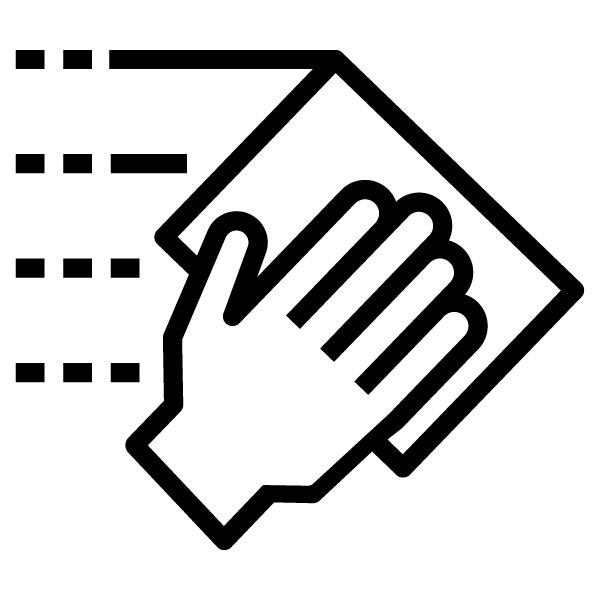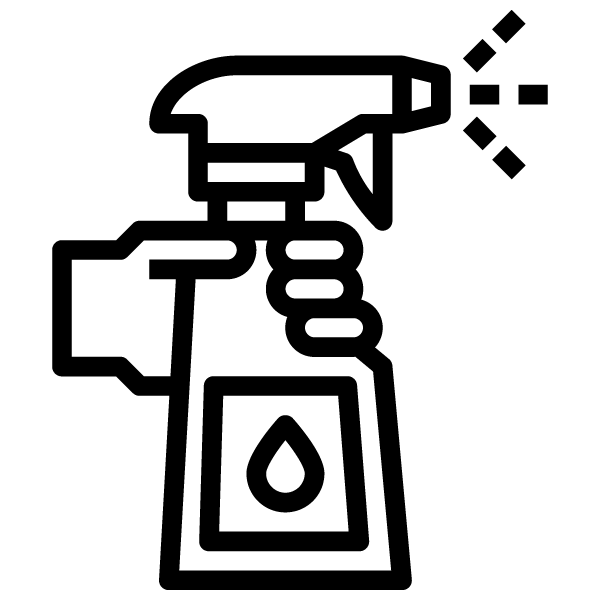We’ve put this article together to help navigate through some of the basics of cleaning and disinfecting, and what may be best for your situation. Trust us when we say there is no easy answer out there. We have been learning much about this recently, and even national bodies such as the CDC, FDA and WHO have changed their guidance over the past months. To add to the problem, supply shortages have made it more difficult to follow exact guidelines. We’ve tried to make this article as easily digestible and informative as possible
Cleaning and disinfecting: What’s the difference?

CLEANING = Physically removing impurities off of a surface
Cleaning physically removes germs, dirt, and impurities from surfaces or objects by using soap (or detergent) and water. This process does not necessarily kill germs, but by removing them it lowers their numbers and the risk of spreading infection.

DISINFECTING = Killing germs on a surface
Disinfecting kills germs on surfaces or objects. Disinfecting works by using chemicals to kill germs on surfaces or objects. This process does not necessarily clean dirty surfaces or remove germs, but by killing germs on a surface after cleaning, it can further lower the risk of spreading infection.
Cleaning of visibly dirty surfaces followed by disinfection is a best practice measure for prevention of COVID-19 and other viral respiratory illnesses.
Should I be cleaning, disinfecting or both?
There is not a one size fits all answer to this question. Start by assessing the risk factors of your particular environment. Below are some tips to help you assess some of these factors:
HOMES: Generally, an individual household is considered low risk because there are minimal people in the house. Surface cleaning with basic household cleaners, like bleach, soap and water, is likely sufficient for reducing bacteria, fungi and viruses in most homes. Many high level disinfectants can be used in the home, but are not typically recommended or needed.
OFFICES: More factors come into play in an office setting. How many people are in the office? How large is the space? Is there foot traffic from outsiders or the general public? Generally the more people in any given space the greater the risk. A good start for office spaces is to treat high touch surfaces, like door knobs, counter tops, sink areas, etc., with a disinfectant daily or several times daily, and perform less frequent regular cleaning of other areas.
SCHOOLS: Schools generally have high rates of traffic and several hundred people moving though the facility in any given day. A complete comprehensive plan to mitigate risk is likely required by your state or local government. The plan is likely to include both cleaning and disinfection.
GYMS: Gyms normally have moderate to high levels of traffic, and more exposure to body fluids. Cleaning and disinfecting equipment in between uses is important. Keep in mind, most disinfectants have what is known as “kill time”. This is important to understand because if the kill time is one minute, then the equipment being used must be vacant for at least one minute after applying the disinfectant before the next person can use it. Read the manufacturer label or instructions for use to understand more about a product’s kill time. Daily/nightly cleaning and high level disinfection of the entire facility may be required to further mitigate risk depending on the environment. Once again, consult your local governments recommendations and mandates..
MEDICAL CLINICS: The risk factors in small medical clinics are likely much higher than many other small businesses. If sick patients are coming into your clinic then your environment presents high risk. If you are a psychology, counseling or rehab clinic that is not seeing sick patients your risk may be lower. Determining your risk level is a detailed process. A good starting point is OSHA. Many states operate their own OSHA programs while some fall under federal guidelines. Consult your OSHA authority to help you in assessing your environment’s risk and create a plan that suits your needs. As a medical clinic, not only is important that you follow local, state and federal guidelines, but also that you make sure your patients feel safe and protected.
The tips given above are only generalizations. You should consult your local, state and national authorities to decide what is best for your facility. Below is guidance from some national organizations that may be of help.
[CDC] Cleaning, Disinfection, and Hand Hygiene in Schools – a Toolkit for School Administrators
[WHO] Getting Your Workplace Ready
What is the current status of cleaner and disinfectant product availability?
This is a big question these days. Many disinfectant products are unavailable, or only available in small quantities.
As of the writing of the article, cleaning and disinfectant liquids and sprays are becoming increasingly available, and the supply seems to be pretty solid moving forward. Some sprays are considered 1-step, meaning they both clean and disinfect at the same time. This typically means you will need to spray the surface and use a cloth to follow up with wiping. If the surface is already free of visible dirt and grime, many liquid disinfectants, such as Protex, can be sprayed onto surfaces and left to air dry without any wiping.
When it comes to cleaning and disinfectant wipes, the market is in very short supply. Right now alcohol wipes are slowly becoming more available. EPA guidance suggests using alcohol (70% or greater) as an alternative disinfectant if you can not find an EPA approved disinfectant. Keep in mind that alcohol may discolor or damage some surfaces, so take caution and consult if you have doubts about using alcohol wipes.
Due to the lack of availability of disinfectant wipes, wipes that are not labeled for surface cleaning are being used to clean surfaces. Many alcohol wipes are not labeled for surface use; however, we see national bodies such as the EPA stating that 70% can be used to clean and disinfect surfaces. These alcohol wipes can be used to clean surfaces if you choose; however, no manufacturer can make any specific claims regarding viral reductions or kill times.

